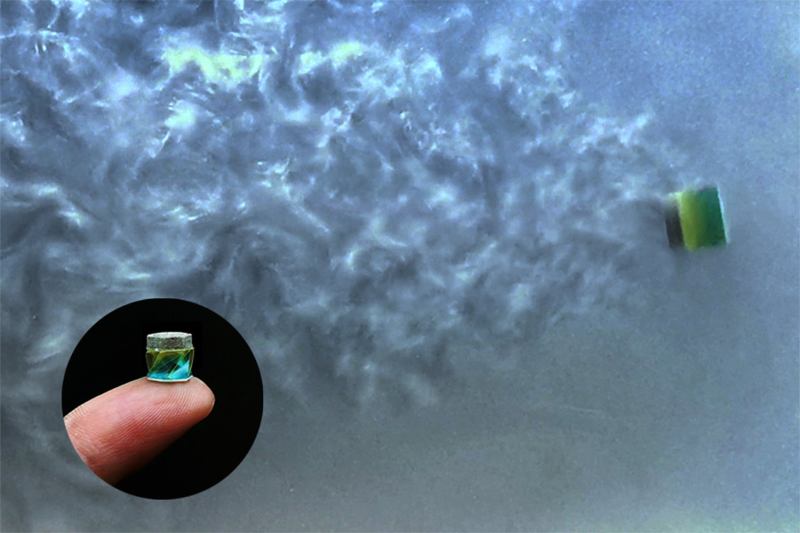Within the world of medical science fiction they are found everywhere: tiny robots that can zip through blood vessels and intestines, where they can deliver medication, diagnose medical conditions and even directly provide treatment. Although much of this is still firmly in the realm of science-fiction, researchers at Stanford published work last year on an origami-based type of robots, controlled using an external magnetic field. Details can be found in the Nature Communications paper.
These miniature robots use the well-known Kresling origami pattern, which when compressed creates a rotor-like structure. When equipped with magnetic surfaces, these robots can be controlled in a variety of ways that allows them to propel themselves through fluids by spinning, as well as do flips. What enables the targeted drug delivery feature is the internal pocket of fluid (dye in the experiment) and the monostable state of these origami robots. When the magnetic field is removed, they unfold by themselves, which causes an embedded needle to pierce the pocket with medication after which turning the magnetic field on and off creates a pumping motion.
Effectively, by tracking the robots’ journey through the body and steering them using a precisely controlled magnetic field, they can deliver medication, assist in therapies and surgeries. Although medical applications and requisite usage approval are still years away, it’s nevertheless an exciting glimpse at what could one day be yet another incredibly useful medical tool.
(Thanks to [koppanyh] for the tip!)















No payroll!
The videos at the link are interesting.
But, I wonder if the “swim fins or propeller” mechanism might macerate tissues it travels along.
better not watch this biopsy needle video then:
https://www.youtube.com/watch?v=U47yS_nunIA
OH GOD NO
@2:09 Ex vivo pork loin XD
There are also Concentric Tube Robots, which take that idea and turn it up to 11 (with the added ability to steer in free space, not just using reaction force against a rigid medium).
At some point the “robots” are just going to be tailored chemistry.
This is another one of those things that I’ve been reading about for forty years and I begin to wonder if it isn’t just a grant/nonprofit money racket
You missed the funny part. The robot must be enclosed between two giant coils (50x50x10cm) at <10cm min distance in order to receive ~4-20Hz for work.